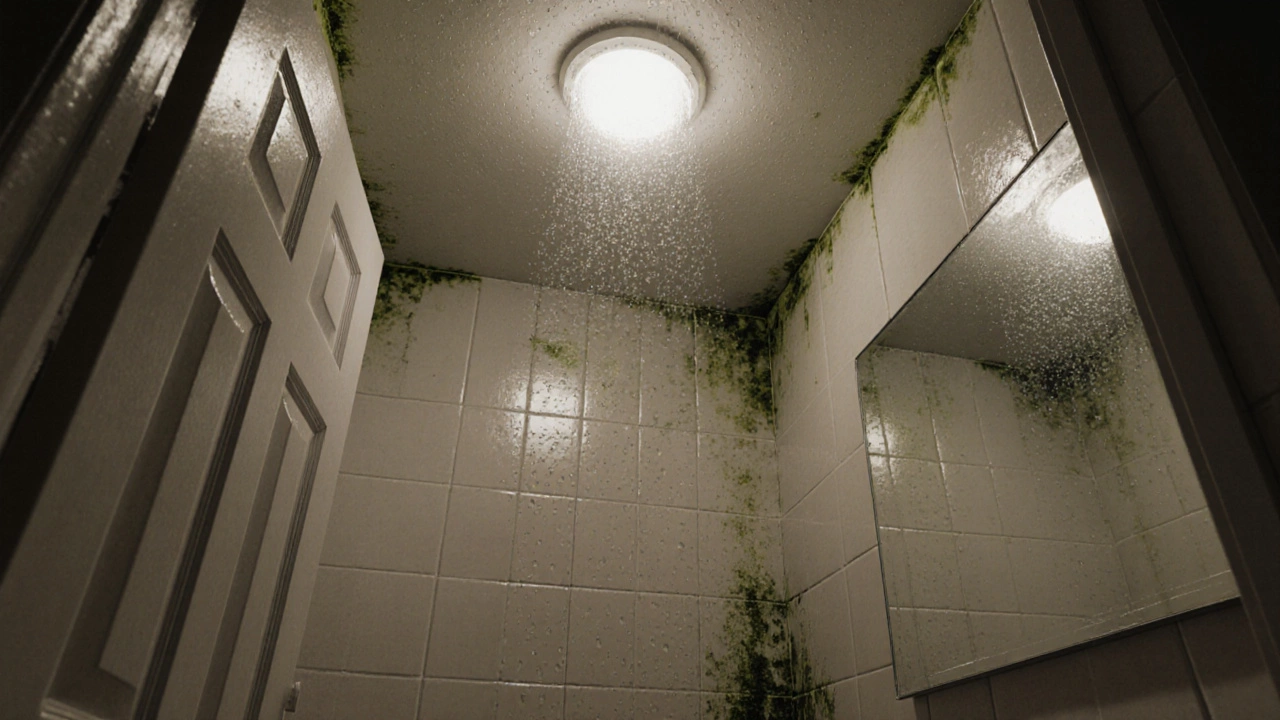When dealing with Ventilation, the process of moving fresh air into and stale air out of indoor spaces. Also known as air exchange, it is essential for health and comfort. A key component is the Extractor fan, a device that pulls humid or polluted air out of places like kitchens and bathrooms. Another common device is the Ventilation fan, which circulates air within a room to maintain even temperature and moisture levels. Good Indoor air quality, the measure of pollutants, humidity, and oxygen levels inside a building depends on how well these systems work. Ventilation isn’t just a buzzword; it’s the backbone of a safe, energy‑efficient home.
Without enough fresh air, moisture builds up, mold spores spread, and odors linger. That can trigger allergies, worsen asthma, or even cause structural damage to walls and ceilings. Simple airflow also helps heat and cooling systems run smoother, which saves on energy bills. In a kitchen, a strong extractor fan removes cooking steam that would otherwise fog windows and coat surfaces with grease. In a bathroom, a well‑placed ventilation fan pulls away humidity that can rot wood and corrode metal fixtures. In short, good ventilation protects your health, preserves your home, and reduces long‑term costs.
Not all fans are created equal. An extractor fan is designed to pull air out of a specific space and expel it outdoors. It usually sits behind a grille in a window or wall and runs continuously while the area is in use. A ventilation fan, on the other hand, often recirculates air between rooms or draws in fresh outdoor air through ducts. Some models combine both functions, acting as a heat‑recovery ventilator (HRV) that captures warmth from outgoing air and transfers it to incoming fresh air, improving efficiency during winter.
Choosing the right fan starts with location. Kitchen exhaust units need enough CFM (cubic feet per minute) to handle the heat output of your stove—typically 100 CFM per 10,000 BTU of cooking power. Bathroom fans are sized based on room area; a 50‑square‑foot bathroom usually requires a 50 CFM fan for adequate moisture removal. Power source matters too: most residential fans run on standard 120 V AC, but some newer models use low‑voltage DC for quieter operation. Wherever you install them, make sure the fan vents directly to the outside, not into an attic or crawl space, to avoid hidden moisture problems.
Even the best‑speced fan won’t perform if you ignore maintenance. Dust and grease can clog the blades, reducing airflow by up to 30 %. A quick monthly wipe‑down of the grille and a semi‑annual deep clean of the motor housing keep the fan humming efficiently. Listen for rattles or a sudden drop in suction—that’s a sign the bearings may need lubrication or the motor could be failing. Replacing a worn fan is usually cheaper than fixing water damage caused by excess humidity.
Typical warning signs tell you when ventilation has slipped. Stubborn fog on mirrors after a shower, a musty smell in the kitchen, or persistent condensation on windows all point to inadequate air exchange. If your extractor fan runs but you still see steam build‑up, the duct may be blocked or the vent cap could be sealed by debris. Conversely, a fan that never turns on might have a tripped circuit breaker, a loose wire, or a dead motor. Spotting these clues early can prevent costly repairs later.
Safety and regulations also play a role, especially when ventilation interacts with gas appliances. Building codes in many regions require a functioning extractor fan for any gas stove or water heater to ensure proper venting of combustion gases. An improperly vented gas line can lead to carbon monoxide buildup, which is life‑threatening. Always use a certified installer for gas‑related ventilation work, and consider installing a carbon monoxide detector as an extra safeguard.
When you’re unsure whether a DIY fix will suffice, call a professional. A qualified technician can test airflow, check motor amperage, and verify that the fan complies with local code. They’ll also assess whether a simple filter replacement can solve the problem or if a whole unit needs swapping. While a new fan costs more upfront, proper sizing and installation save you from hidden energy waste and premature breakdowns.
Below you’ll find a curated collection of articles that dive deeper into each of these topics. From step‑by‑step guides on troubleshooting a noisy extractor fan to easy checks for indoor air quality, the posts cover everything you need to keep your home breathing easy. Explore the list to find practical tips, safety advice, and repair strategies that match your skill level and budget.
Posted by
Orin Trask
0 Comments

Skipping an extractor fan leads to moisture, mold, poor air quality, and higher energy bills. Learn the risks, signs, and how to choose and maintain the right fan for a healthier home.
read more